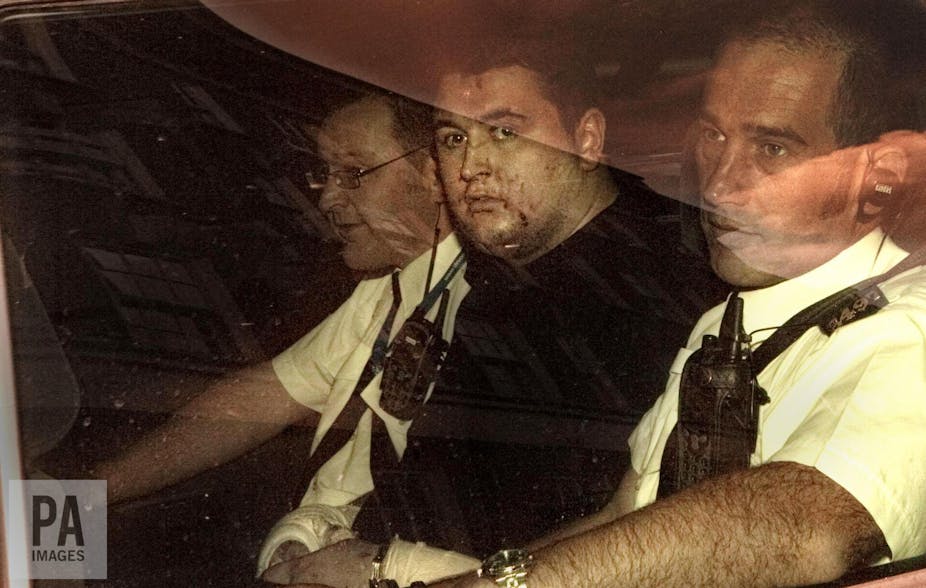Terror recruits often seem to come from vulnerable backgrounds. But new research suggests that those with traits of Autism Spectrum Disorder (ASD) could be more at risk of being radicalised. It follows a number of high-profile cases where autism appears to have played a role in the offender’s behaviour. So if people with ASD could be at higher risk, how can we protect them from falling under the spell of terror organisations such as the so-called Islamic State?
Terrorism involves committing violent acts for political, religious or ideological reasons. It can either be committed as part of an organised group or alone but it is traditionally characterised and understood as a group phenomenon. But a new type of terrorist threat has emerged in recent years – the “lone wolf”. Over the last decade, the rise of lone wolf terrorists has necessitated the need for an understanding of the pathway from radical ideology to radical violence. A greater understanding of this issue would inform the development of more effective identification strategies.
Given that the examination of any connection between ASD and terrorism is in its infancy, a simple categorical model describing different levels of commitment to a terrorist cause may be one step forward. Arie Kruglanski and colleagues describe a “degree of radicalisation” scheme where different levels of commitment to different terrorist-related activities was identified. According to their scheme, the most prevalent group of individuals are those who are “passive supporters” (those who are sympathetic to the cause). Next, are individuals who are more active in the organisation (they may have an administrative function or recruit others). The next category involves individuals who actively support violence and are ready to fight for the cause. Lastly, they identify suicide bombers who are willing to give their lives. Lone wolf terrorism would fit this last category.
I have been examining the link between ASD and terrorism in collaboration with Lino Faccini, a New York State psychologist. Together we presented specific examples of people with ASD who had engaged in each level of commitment to different terrorist-related activities. We did this to illustrate how some of the symptoms of ASD can “help” make a pathway towards being inspired to act on behalf of a terrorist cause, join a terrorist organisation, engage in directed attacks – or indeed carry out lone wolf terrorism.
‘Active supporters’ and lone wolves
In 2015, Peyton Pruitt – a youngster diagnosed with Autism, mild intellectual disability and Attention Deficit Disorder – was arrested in Alabama for sending bomb making instructions to a person he believed was part of IS. This case may be about a naive and vulnerable person, who spent an exceptional amount of time scouring the internet without supervision. But in doing so he became fascinated or fixated with terrorism. Subsequently he found some affiliation with others whom he could relate to, via the safety of the internet. As a result, he was then exploited and/or became sympathetic to and inspired by IS.
Another case we discussed was that of Nicky Reilly, an 18-year-old man, diagnosed with Asperger’s Syndrome. Reilly did not have many friends and lived in a poor area of Plymouth, England. Reilly clearly had difficulties relating to other people and had a fixation with terrorism and martyrdom. He sought and found affiliation (and also what he believed was the right life). He became a practising Muslim in 2002. After his girlfriend left him, he befriended a group of Muslim men. Reilly became obsessed with martyrdom and with the Twin Tower attacks. He had posters of the attacks on his wall and as wallpaper on his computer. He would watch videos of the 9/11 attacks and watch video clips of beheadings. Reilly believed that he would be entitled to a better life if he died a Muslim.
Eventually, he changed his name to Mohammed Rasheed. Reilly also turned on his family calling them “infidels”. He devised a plan to make three crude bombs, and strap them to his chest as a suicide bomber, then run out in a crowded restaurant killing as many people as possible. Reilly went into the bathroom of a restaurant with bottles containing sodium hydroxide, paraffin and nails. But when he activated the bomb, he had difficulty opening the bathroom stall door and it exploded. He was seriously injured. Tragically, Reilly took his own life while in prison some eight years later in 2016.
Risk factors
It is important to caution here that there is no substantial link between ASD and terrorism. However, there may be specific risk factors which could increase the risk of offending among people with ASD. Autistic special interests such as fantasy, obsessiveness (extreme compulsiveness), the need for routine/predictability and social/communication difficulties can all increase the vulnerability of an person with ASD to going down the pathway to terrorism.
Searching for a “need to matter” or social connection and support for someone who is alienated or without friends may also present as risk factors. People with an ASD may be more vulnerable to being drawn into increasingly more involved commitment. They also have a tendency to hyper-focus in on their fascinations and interests at the expense of other attachments and life interests. These are potentially the conditions which extremists are increasingly exploiting in people they target for recruitment and training.
Our findings clearly highlight the need for clinicians carrying out forensic evaluations of people who have engaged in terror-related actions to investigate whether ASD may be related to their behaviour. Such evaluations are vital – not just in delivering justice – but also to ensure rehabilitation and offender management are informed by an understanding of the ASD diagnosis in each case.

